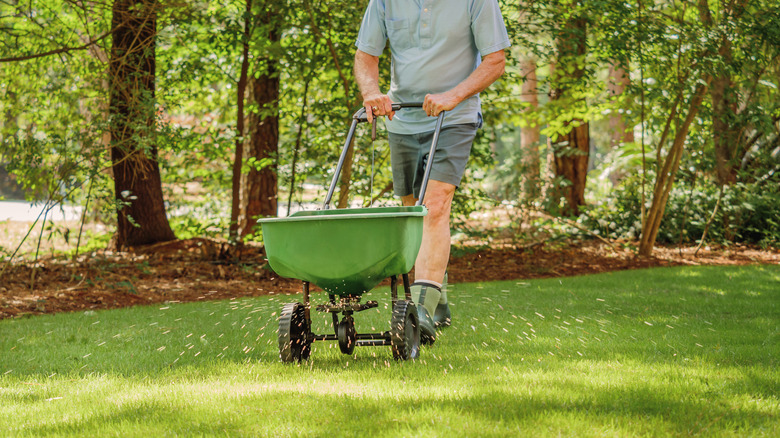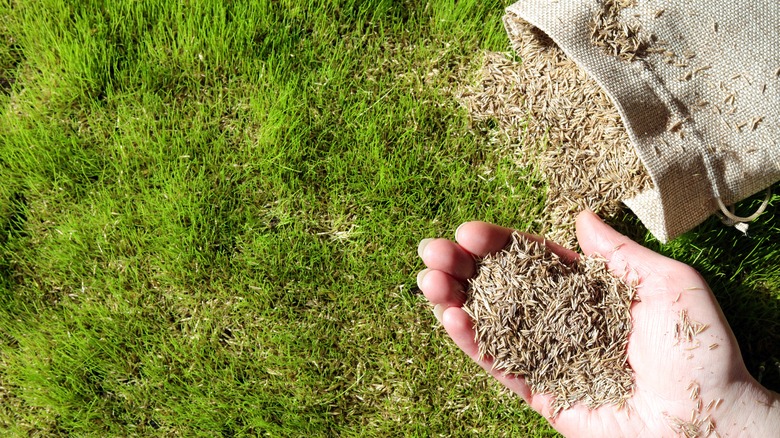Is November Too Late To Plant Grass Seed? Here's What You Should Know
Planting grass seed is usually considered a warm weather activity. But in the fall, when we're doing garden clean up, dividing perennials, and planning for the next season, we want to get as much done as possible. So, it might seem tempting to try and do something about those bare patches of grass on the lawn or next to the new flower beds you just dug. The good news is, you can plant grass seed in November, depending on the type — as long as certain conditions are met.
The most crucial thing for growing grass from seed is the period during which the seed germinates. A number of factors affect grass seed's ability to germinate, including the freshness of the seed (seed past its expiration date might not germinate as readily), the quality of the soil, the presence of pests (like birds) that might eat the grass seed, and adequate water and sun. Sudden drops in temperature will also affect germination, so keep an eye on the weather forecast.
Most grass seeds planted for lawns will not germinate without enough sunlight, so try to resist the temptation to plant grass seeds where they won't get at least five hours of sun per day, though there are some grass seeds that tolerate partial shade. If sunlight moves around in your yard as the season progresses (because structures or trees block the angle of the sun), be sure you know if there will be enough light for it in the autumn months. In spring, if you get more sun in the area you want to plant grass seed, it's probably best to wait to plant grass seed at that time.
Temperature is important for planting grass seed
It's important to know the right planting window for the kind of grass seed you want to plant. For example, cool-season grasses tolerate cold winter temperatures and can be planted until the first hard frost. These cool weather-loving grasses include Kentucky bluegrass, fescue, and perennial ryegrass. You can also try dormant seeding with cool weather grasses. This method means allowing grass seed to remain in place through the winter and works best on bare patches. Ideally, you should scatter seed right before a significant snowfall: Several inches of snow helps protect the seed until it gets enough warmth and light in spring to germinate.
If you live in a place that doesn't get too cold in winter, you can plant warm-season grasses, including Bermuda grass, centipede grass, carpet grass, and zoysia. They also have a timing window related to temperature and should be planted while nighttime temperatures are still above 60 degrees Fahrenheit. Once temperatures start to dip below this level at night, it may be too cool for these grasses to germinate successfully. Most warm-season grasses need full sun, except St. Augustine grass, which tolerates some shade.
Whether you are planting warm or cool season grasses, follow the planting directions on the packaging for the best success. Adequate watering is crucial, but overwatering can make germination difficult, so keep an eye on potential rainfall and water accordingly. If you're adding some fresh topsoil, add it before planting the grass seed, not on top of it. Otherwise, the seed may get smothered and fail to germinate.

